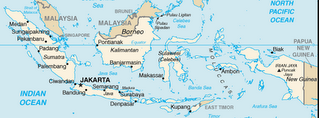
# 357
The good news is; thus far there has been no explosion of confirmed cases of the H5N1 virus in Indonesia, and therefore no evidence of human-to-human transmission.
The bad news is; suspected cases continue to show up at regional hospitals and clinics, and the backlog of undiagnosed cases has increased.
Based on local media reports, at least 18 hospitals in Indonesia have suspected bird flu patients under treatment. The central government in Jakarta has announced that a total of 44 hospitals are being readied to receive H5N1 patients. Each day, perhaps 8 to 12 new patients are admitted, and the time it takes to get tests done increases.
Undoubtedly, many of these suspected cases will turn out to be something other than bird flu. Many suspected cases have already been ruled out. But, the tests are not always reliable, as evidenced by the negative tests reportedly received by the 6-year-old girl who died last Friday. It took six days after her death before a positive test was confirmed.
According to the newshounds on the Wiki, there are currently over 60 known patients hospitalized in Indonesia suspected of having bird flu, with several dozen others being treated in their homes. Some of these patients have been hospitalized for as long as two weeks, with no announcement by authorities as to their condition.
Part of the problem is the unreliability of the tests used to diagnose the H5N1 infection. The throat and nasal swabs have been proven extremely unreliable. The PCR tests must be repeated 3 times before doctors generally accept them, and even then, when faced with a patient that presents with classic symptoms, a doctor might not accept three negative tests as definitive. In Thailand, last year, a patient tested negative 8 times, and wasn’t proven to be positive for the virus until lung tissue was taken during an autopsy.
The administration of Tamiflu may also be clouding the testing, as it inhibits the replication of the virus (a good thing), and may make detection more difficult.
What remains unknowable at this time is how many of these `suspected patients’, in fact, have the H5N1 virus. With dengue, seasonal flu, malaria, and no small amount of media propelled bird flu hysteria sweeping the nation, at this point; it is simply impossible to tell.